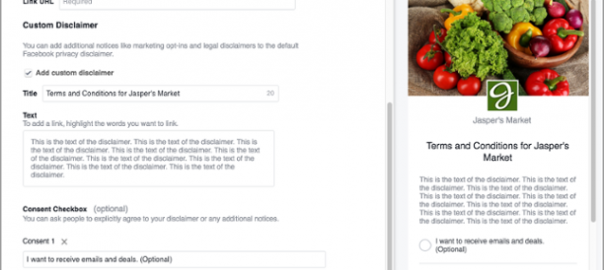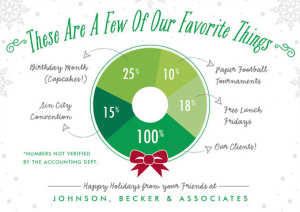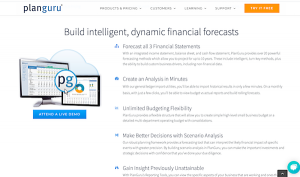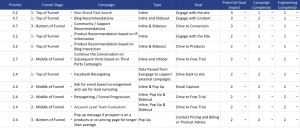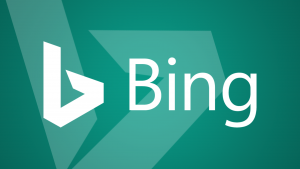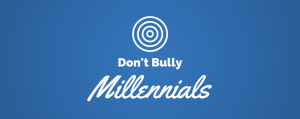Opinion: Until now, long lead forms and tiny screens haven’t mixed
The number of mobile consumers connecting to brands via Facebook advertising is skyrocketing. The company is reaching 1.284 billion users daily, making 84 percent of its advertising revenue from mobile and continually evolving the ways that businesses can reach this huge, mobile-first audience.
One of the newer ad format offerings, lead ads, is starting to draw the attention of marketers of high-consideration purchases like mortgages, insurance and education because it solves a thorny problem somewhat unique to high-consideration purchases: Until now, long lead forms and tiny screens haven’t mixed.
Facebook lead ads solve the problem of long forms and small screens with a streamlined lead-submission process that is designed for the least amount of typing possible to reduce attrition and drop-off.
This is a welcome development for high-consideration purchases, which have historically required consumers to fill out detailed lead forms. The shift to mobile is becoming a major headache for industries like insurance, with more than 52 percent of in-market insurance shoppers now researching and completing purchases entirely on mobile devices.
Lead ads present marketers with a game-changing opportunity to reach consumers and respond to inbound consumer inquiries while interest is highest—in real time via a call to the prospect’s smartphone. But getting the most value out of lead ads also requires the right approach.

How do Facebook lead ads work?
A Facebook lead ad prepopulates a lead form with user contact information that can be completed in as little as two taps. When a consumer taps on the lead ad, a form opens with the consumer’s contact information automatically populated, based on the public information they share with Facebook, like their name and email address.
With this native, streamlined form, lead ads gives marketers what they need to capture relevant details from people at a moment of discovery. It also vastly improves the user experience, increasing the likelihood that the consumer will complete and submit the form.
Here are three things you can do to get the most out of your lead ads:
Take advantage of that targeting gold mine
Facebook has powerful targeting capabilities based on massive amounts of data on their users’ preferences, behaviors and more. For example, Facebook lookalike audiences enable you to expand your audience based off of a seed list. You can upload a list of your best customers and Facebook will find other consumers with the same characteristics to add to your campaigns.
Also, when a marketer establishes a relationship with a consumer, they can continue engagement within Facebook. For example, a brand can utilize engagement custom audiences to build a cluster based on who opened, started and abandoned or who completed the form on a lead ad. With those engagement custom audiences, the brand can then approach consumers with the appropriate follow-up targeting based on that signal and follow them through the lifetime of the relationship.
Companies that have invested significant time in understanding their ideal consumer with demographic, psychographic and behavioral attributes stand to benefit the most from Facebook’s scale and targeting capabilities.
Don’t limit your options to only purchased leads: Think higher up the funnel
There are situations where a consumer might not be ready for purchase, but you can still capture intent and nurture the prospect via lead ads. For example, an on-the-go consumer may not want to think deeply about filling out a mortgage lead form at that precise moment, but he or she may be interested in signing up for a newsletter about interest rates or downloading a list of fast facts for first-time homebuyers.
Lead ads offer not just a variety of prefilled form fields, but six different call-to-action button options—Get Quote, Sign Up, Subscribe, Learn More, Apply Now and Download.
Use available features and enhancements
Some exceptional lead ads enhancements have been introduced over the past year, and the list is growing every day.
For example, you can use features like context cards to build interest and knowledge to ensure qualified leads. Context cards give marketers a place to offer more details on the information people are signing up for, thereby decreasing the risk of prospects submitting a lead in error.
Another move that will improve performance is to integrate lead ads into your customer-relationship-management system so that your sales representatives can respond in real-time. Speed is critical in responding to inbound leads, and research shows that conversion rates more than double when leads are called in under one minute.
Lead ads are supported by Salesforce and other leading marketing automation providers like Marketo, Hubspot and Oracle Eloqua, as well as niche providers like education-specific Sparkroom.
The bottom line
With consumers now spending more time on mobile than on computers, it’s not surprising that marketers are excited about the potential of Facebook lead ads. This ad format can generate targeted leads at scale, offers high conversion rates and more accurate contact data and boasts a seamless user experience instead of a thumb-numbing, long lead form. But for maximum impact, be sure that you assess all of the powerful lead ads-related enhancements before you launch your campaign.
Digital & Social Articles on Business 2 Community(67)
Report Post